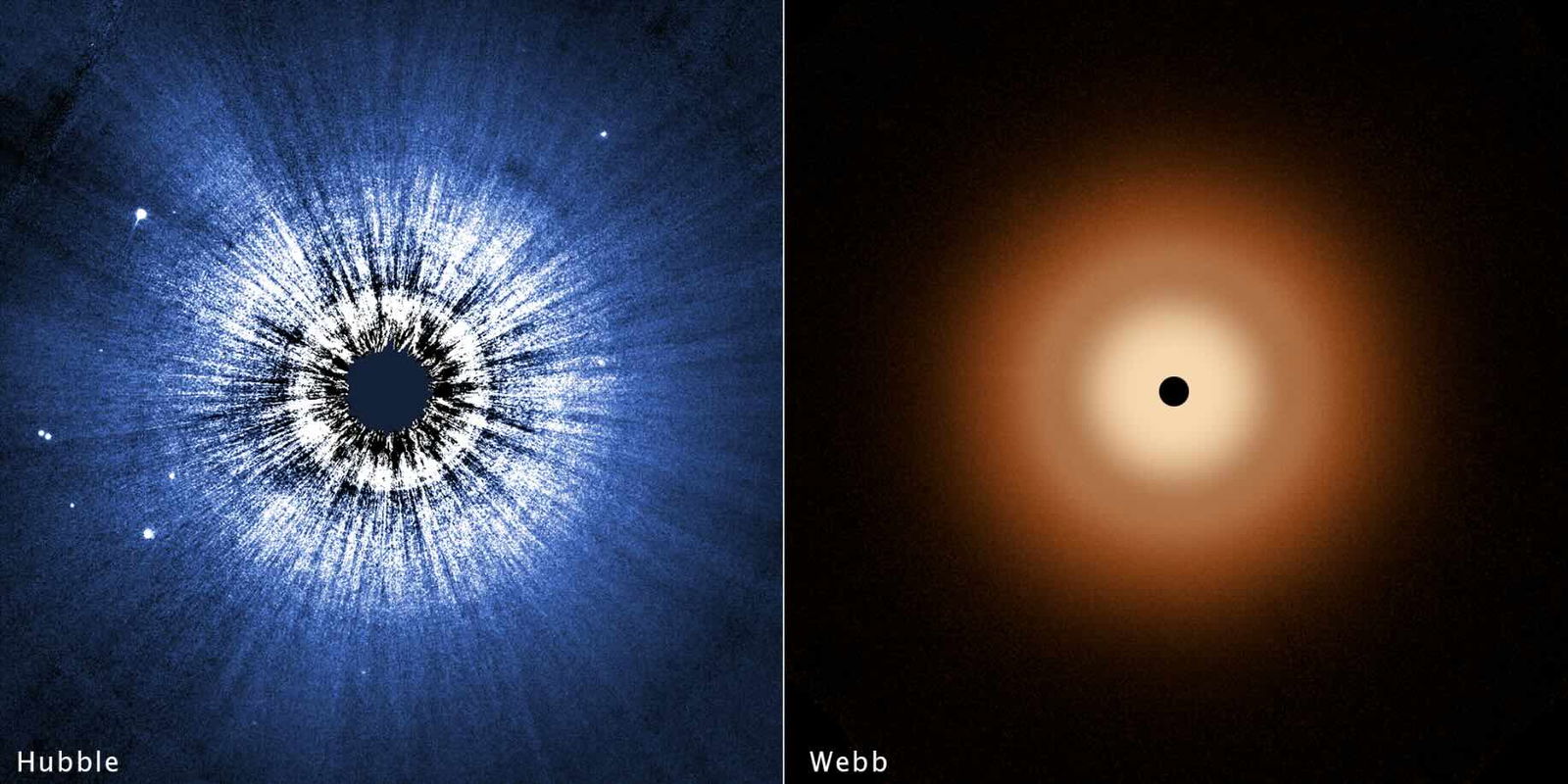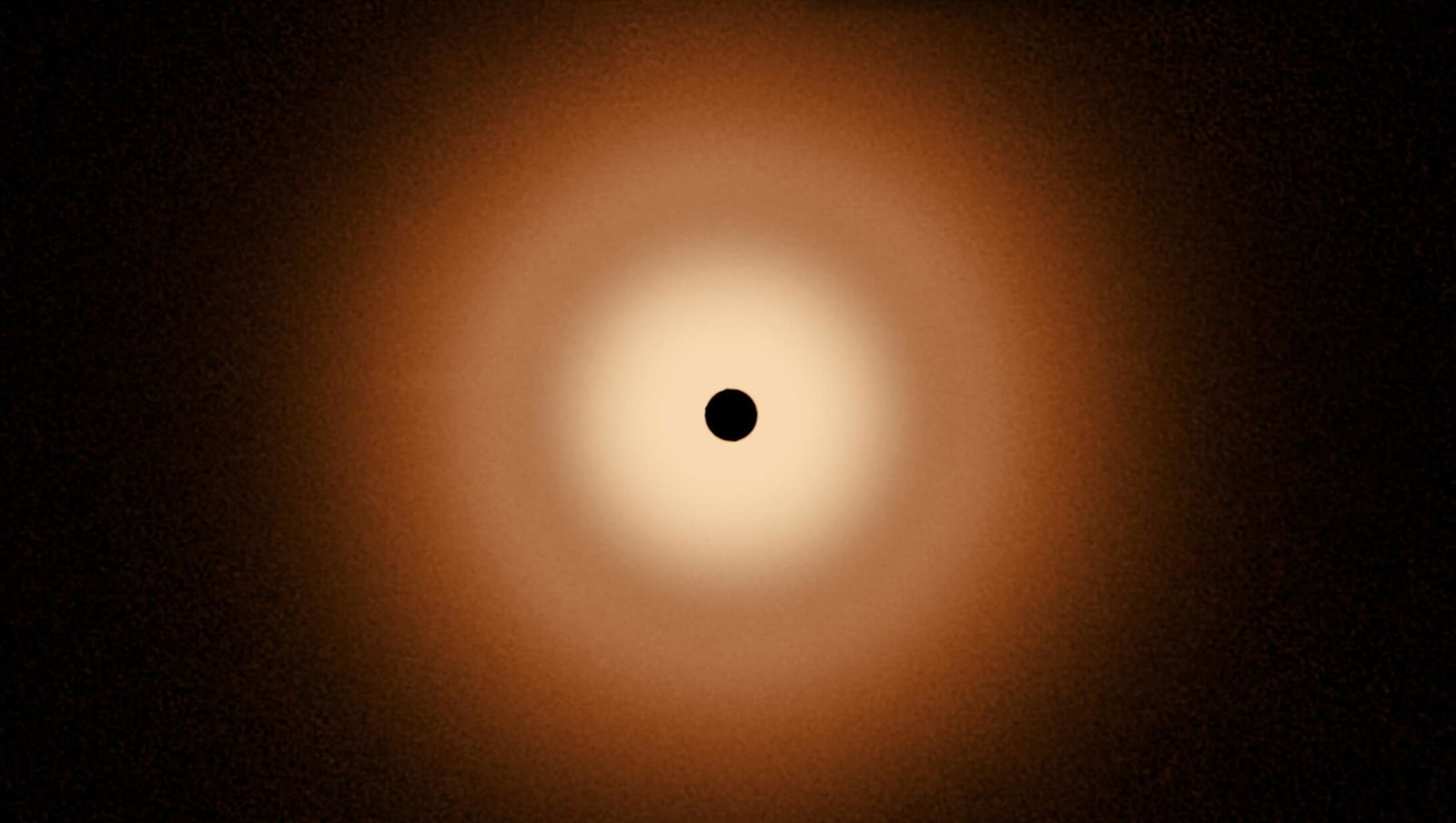Astronomers have uncovered new insights into a massive disk of debris surrounding the star Vega, in a new series of observations by the James Webb Space Telescope that challenge past ideas about planetary formation in star systems.
The discovery, made by researchers at the University of Arizona at Tucson using NASA’s Hubble and Webb telescopes, reveals the smooth appearance and unexpected distribution of particles in Vega’s massive debris disk, which spans an estimated 100-billion miles.
The huge disk surrounding Vega is unlike other circumstellar disks where planetary bodies normally shape the dust surrounding stars into ring formations or gaps. Instead, Vega’s disk lacks any clear signs of planetary influence, raising new questions about its appearance and what makes it so unique.
Like a Scene Out of Science Fiction
Notably, the unique appearance of the circumstellar disk is a good match for its depiction in the 1997 film “Contact,” based on a famous novel written more than a decade earlier by astronomer Carl Sagan. In the film, an astronomer-turned interstellar explorer named Ellie Arroway (portrayed on camera by actress Jodie Foster) skips across space through a wormhole to Vega, where she observes the star’s debris disk which almost resembles a snowy winter storm, devoid of any signs of planets.
As it turns out, the film’s depiction of the circumstellar disk surrounding Vega is actually fairly accurate, in that the huge disk structure does resemble a snowy debris field that, when compared to those associated with systems like our own, appears quite alien.
The new observations relied on the Hubble and Webb telescopes to collect a diverse range of data in imagery made possible by the unique instrumentation employed by each of the space observatories. This included Webb imagery collected with its Mid-Infrared Instrument (MIRI) that revealed the infrared glow produced by miniscule sand-sized particles swirling around Vega. Meanwhile, Hubble’s view at visible wavelengths spotted Vega’s outermost halo, where smoky particles reflect light from the star.
“Between the Hubble and Webb telescopes, you get this very clear view of Vega,” explained Andras Gáspár, one of the researchers involved with the recent observations. “It’s a mysterious system because it’s unlike other circumstellar disks we’ve looked at.”
Striking Revelations by the James Webb Space telescope
One thing that particularly intrigues astronomers about the new observations is the absence of any planets within the disk, which normally function like gravitational “plows” that sculpt the structure’s shape.
The absence of planets in the case of Vega’s disk, according to lead researcher Kate Su, has prompted her team to “rethink the range and variety among exoplanet systems.”


Additionally, dust particles that are present within Vega’s disk also seem to be layered, possibly as a result of radiation pressure from the star expelling smaller particles outward, causing them to travel faster than larger grains.
“Different types of physics will locate different-sized particles at different locations,” said Schuyler Wolff, co-author of the portion of the findings made possible by the Hubble telescope. Wolff says this layering effect offers new clues into the dynamics occurring within circumstellar disks.
A Subtle Gap Emerges
Despite the disk’s smoothness, the team did note the appearance of a gap that emerges, albeit subtly, at a distance of around 60 astronomical units (AU) from the star. That’s a distance comparable to twice the distance between Neptune and the Sun, which hints at some kind of influence apart from those expected by the presence of planetary bodies.
As to what could be causing it, Su suggests that there could be something present that remains hidden from view, including the possibility of an unseen planet.
“We’re finding out a lot about the planetary systems,” Su said, “even when we can’t see what might be hidden planets.”
Vega: A Star Very Unlike its Peers
Vega remains an outlier, especially given that other stars like it are believed to be close to 450 million years old, and form disks of dust and gas very early in their evolution. However, some mature stars like Vega also possess dusty disks despite their ages, a phenomenon that may arise from collisions with asteroids and other space objects that introduces new material into their surrounding debris.
Still, some of Vega’s stellar neighbors, including the star Fomalhaut, appear remarkably different, despite having similar ages. “Given the physical similarity between the stars of Vega and Fomalhaut, why does Fomalhaut seem to have been able to form planets and Vega didn’t?” asked team member George Rieke.
Rieke added that the new observations made possible by Hubble and Webb nonetheless “provide so much more detail that they are telling us something completely new about the Vega system that nobody knew before.”
The team hopes that findings like these can not only provide new intriguing insights into the search for planets around stars, but may also add potentially crucial new insights into how varied and complex planetary systems can be.
The team’s research is the subject of a pair of new papers, by Wolff et al. and Su et. al., which are soon to be published in The Astrophysical Journal.
Micah Hanks is the Editor-in-Chief and Co-Founder of The Debrief. He can be reached by email at micah@thedebrief.org. Follow his work at micahhanks.com and on X: @MicahHanks.

